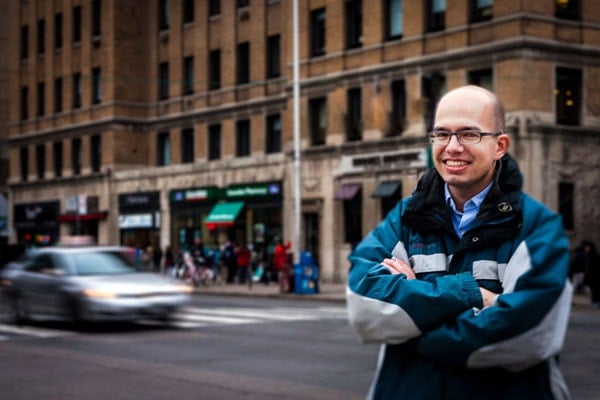
Traffic congestion: are HOT lanes the answer?
Published: December 12, 2014
If there’s one thing that unites all city dwellers in the 21st century, it’s traffic congestion. Whether it’s crawling along highways, dealing with road rage or lamenting wasted time, bumper-to-bumper traffic ranks as one of the worst features of modern life.
But Jonathan Hall, an assistant professor in the University of Toronto’s department of economics and School of Public Policy and Governance may have a solution. Hall researches ways to improve transportation policy in order to reduce traffic congestion.
One initiative Hall has proposed in Toronto is High Occupancy Toll (HOT) lanes, a dedicated no-charge traffic lane for carpooled vehicles that’s also available to single-occupant vehicles for a fee. Writer Dominic Ali spoke with him about whether HOT lanes could reduce traffic congestion and restore inner calm to the world’s drivers.
How did you first become interested in researching this topic?
I would always talk about traffic and how to reduce it while driving with my wife, and she kept encouraging me to do formal research on it. I resisted because there was no one else at the University of Chicago (where I was getting my PhD) studying urban issues. Eventually I wised up and listened to her. I added it to the list of topics to try to make progress on, and it was the one that took off.
How will your work contribute to the field and to large cities like Toronto?
My research shows how adding time-varying tolls to a portion (say half) of the lanes of a highway can benefit all road users. Those who choose to pay a toll would be able to avoid traffic congestion while those who stay in the free lanes would have faster travel times (because some of the traffic will have been diverted to the HOT lanes). This is important because one of the most significant problems facing large cities like Toronto is traffic congestion.
How can the High Occupancy Toll (HOT) lanes you’re proposing improve urban areas?
They can reduce traffic congestion and reduce pollution. They also allow people the option of paying with money to travel faster during the most desirable times while allowing others to pay with their time, travelling more slowly during peak hours in regular lanes.
It can provide a fast and reliable option for those who need to get somewhere in a hurry, such as getting to the airport or running late to pick up kids from daycare/school, etc. Since buses can use the HOT lanes, public transit along the route will be faster. And governments can raise revenue to reduce other taxes or invest in the transportation network.
What are the biggest challenges cities have implementing HOT lanes?
There are at least three challenges to public acceptance. The first is that people hate the idea of paying for something that is currently free. People are paying to use the road at 8:00 am right now – they pay by sitting in traffic for an hour. But adding tolls allows you to pay with money instead of time.
The second is that HOT lanes are not "envy free". That is, when you are stuck in traffic in the free lanes you will envy those zooming past you in the HOT lane.
A third issue is that people are concerned that HOT lanes help the rich and hurt the poor. My research (hopefully) addresses this concern and shows that it can help the poor, too. It is true that a lot of the benefits go to the rich who can pay to avoid traffic. The poor will still be in traffic. But the poor need a reliable and fast option too, and there will times they will pay to use the HOT lanes, even if it isn’t every day. Also, we can use the revenue raised from the toll in targeted ways to help the poor, such as reducing regressive taxes or expanding roads or investing in transit.



